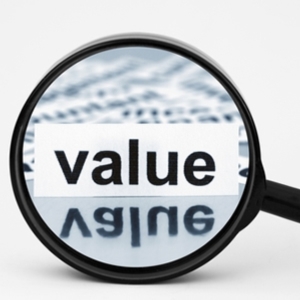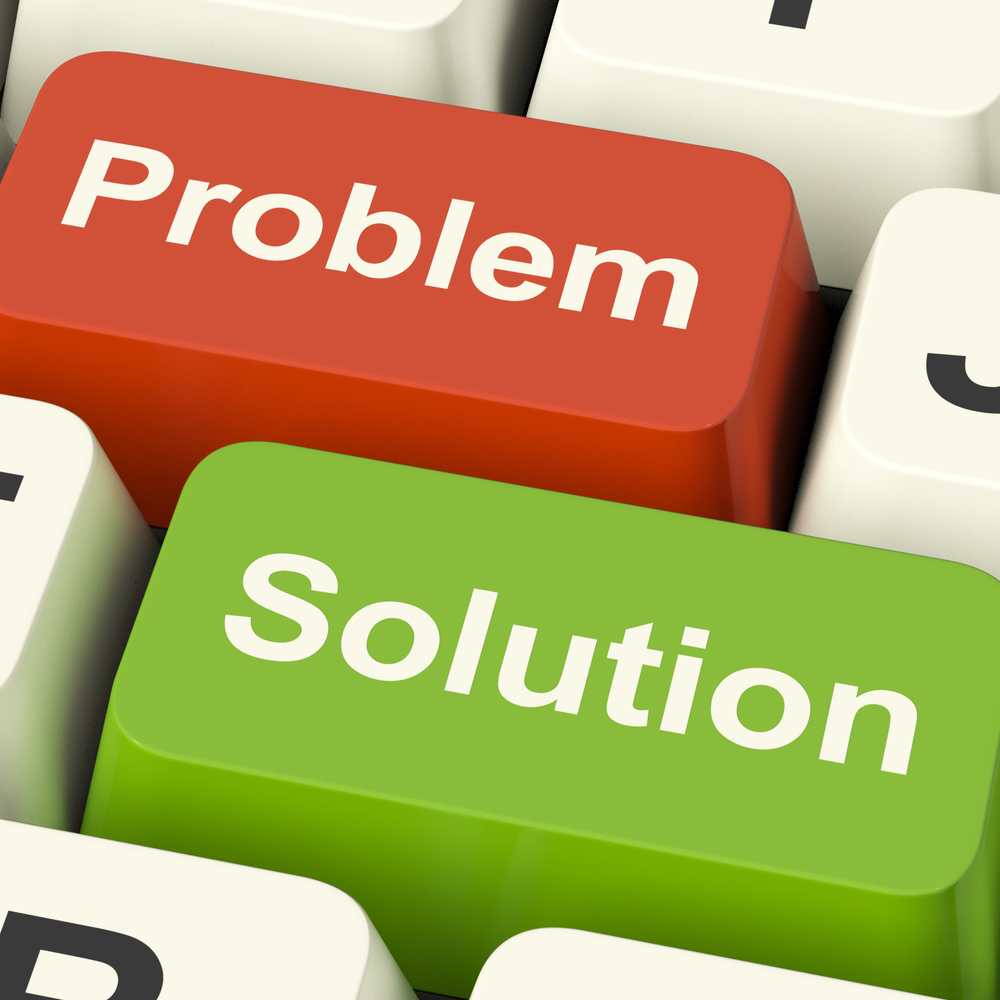 Several of my current clients are startup companies that understand that, to have real value, their patents must be seen by a third party as meaningful to the opportunity--be it customers, revenue stream, or any other business strategy--that this potential potential partner, licensor, or acquirer seeks to access. Put another way, patents generated by early stage companies that are developing innovative technology must “make it cheaper to go through them than around them.” For these types of patent owners, due diligence conducted by third parties is more than just “kicking the tires” of the patent portfolio; instead, their patents will be examined by an expert team to make sure they won’t "break" just when they’re needed most.
As an initial aspect of this discussion, it should be stressed that not all patents are equal in value. Some patents--and, in my view, this is the
Several of my current clients are startup companies that understand that, to have real value, their patents must be seen by a third party as meaningful to the opportunity--be it customers, revenue stream, or any other business strategy--that this potential potential partner, licensor, or acquirer seeks to access. Put another way, patents generated by early stage companies that are developing innovative technology must “make it cheaper to go through them than around them.” For these types of patent owners, due diligence conducted by third parties is more than just “kicking the tires” of the patent portfolio; instead, their patents will be examined by an expert team to make sure they won’t "break" just when they’re needed most.
As an initial aspect of this discussion, it should be stressed that not all patents are equal in value. Some patents--and, in my view, this is the
Startup Patent Strategy: Be Unbreakable
How Companies Can Hit the Mark with Patents
As an IP Strategist, I’ve questioned time and time again why most patents fail to deliver the intended effect of bolstering long-term profits for their owners. I’ve concluded that too many patents read like diagrams intended for assembling products from separate pieces. This effectively means that the patenting process focused more on the structure of the product and not the functionality delivered. This is the opposite to what one needs to do: the customer buys the product’s function, not the structure. If you keep thinking and using the same ineffective patent strategies, you’re going to get the same results! I suggest you begin to think about patents from a different perspective to achieve the kind of success your company’s stakeholders will appreciate in today’s competitive market.
My approach to patents is different. Together with my client, we create patent protection directed to enhancing long-term profits to be generated by a company that successfully brings
Why So Many Patents Fail to Generate Expected Business Value and How to Fix the Problem
It’s not uncommon for me as an IP Strategist with over 20 years of experience to be contacted to provide a second opinion on a company’s patent portfolio. This generally occurs when clients aren’t totally satisfied with previous patenting activities because their attorneys failed to follow through on promises that their efforts would create meaningful business results. It’s typically easy for me to identify the mismatches between patents and value creation because I was an in-house IP lawyer for years after spending my early career at law firms. While in a law firm every patent had value to me because that was my business, in the corporate setting I learned quickly to focus on obtaining patents that mattered to the business. Emphasizing this perspective required me to ensure future patented revenue streams for my company—which was my only client--were well protected, as opposed to generating broad patents for many clients irrespective of the business goals of each of these clients,
Value-Enhancing Patent Prosecution Strategies (Part 1 of 4)
 In my role as the IP Strategist for a number of companies that do not employ in-house patent counsel, I am charged with making sure that my clients’ patenting efforts are in tune with their desired business outcomes. This means that instead of focusing on the drafting and prosecuting of patent applications that form the basis of most patent attorneys’ practices, I work at the front end of the patenting process to design patent strategies that will enhance my clients’ business value first and foremost. When alignment is created with business goals, subsequent patenting efforts will necessarily result in protection that matters to the value of the company. In this regard, I have a number of tools in my “Patent Strategy Toolbox” that I deploy regularly when developing patent prosecution recommendations. Notably, when I mention these tools to new clients,
In my role as the IP Strategist for a number of companies that do not employ in-house patent counsel, I am charged with making sure that my clients’ patenting efforts are in tune with their desired business outcomes. This means that instead of focusing on the drafting and prosecuting of patent applications that form the basis of most patent attorneys’ practices, I work at the front end of the patenting process to design patent strategies that will enhance my clients’ business value first and foremost. When alignment is created with business goals, subsequent patenting efforts will necessarily result in protection that matters to the value of the company. In this regard, I have a number of tools in my “Patent Strategy Toolbox” that I deploy regularly when developing patent prosecution recommendations. Notably, when I mention these tools to new clients,
M&A Failure: When Patent Due Diligence is to Blame
Analysts say that 70% or more of corporate acquisitions will be judged “failures.” I believe that many of these failures can often be attributed to the failure of conventional due diligence processes to suitably account for the participation in patents in predicting long-term financial returns for the acquired company. One reason for this is that the due diligence process moves quickly as deals need to be closed, oftentimes sacrificing robust investigation of complex issues, such as patents. Also, you can’t see something that you’re not aware of, and I know that many business people are not aware of the value that patents bring to a company that is creating innovative products and technology.
Notably, rarely, if ever, is an after-the-fact analysis conducted of what happened to cause M&A failure. It follows that inadequate patent due diligence would likely never be seen to be the cause if this subject is not on the “radar screen” of M
10 Key IP Strategy Insights for Innovative Companies for 2016 and Beyond
 As 2016 begins, I am entering my 8th year(!) of writing about IP strategy insights from a business value creation perspective, both here on my IPMaximizerBlog.com and, more recently, on LinkedIn. While there were quite a few IP lawyers writing blogs in 2008, no one else was then writing about IP strategy. Today, there are even more IP lawyers writing blogs about IP law, but still almost none writing that address IP strategy topics that are meaningful outside of the IP monetization and large IP portfolio context. Over the years, it has sometimes seemed like I was the proverbial "lone voice in the wilderness" who speaks frankly (or as one of my regular readers said to me last year "bravely") about how innovators can take charge of their IP strategy to create value and reduce
As 2016 begins, I am entering my 8th year(!) of writing about IP strategy insights from a business value creation perspective, both here on my IPMaximizerBlog.com and, more recently, on LinkedIn. While there were quite a few IP lawyers writing blogs in 2008, no one else was then writing about IP strategy. Today, there are even more IP lawyers writing blogs about IP law, but still almost none writing that address IP strategy topics that are meaningful outside of the IP monetization and large IP portfolio context. Over the years, it has sometimes seemed like I was the proverbial "lone voice in the wilderness" who speaks frankly (or as one of my regular readers said to me last year "bravely") about how innovators can take charge of their IP strategy to create value and reduce
“IP Strategy” is Meaningless without Desired Business Outcomes
"You can't sell me IP Strategy, Jackie," one of my top clients said to me recently when I sat down with him to conduct customer discovery for my IP Strategy practice. This client, a successful serial entrepreneur whose company has engaged me as "fractional Chief IP Counsel" for the last 1.5 years, swears by the services I provide to him--so much so, that he is a primary source of startup entrepreneur referrals that I obtain today. I was thus surprised that he didn't see my value as providing him with "IP Strategy," but as something else entirely. He said: "If I had to go on the record of why I value your expertise, it's because IP is important to my exit, and you look at IP differently than any other lawyer I have known. I know you're focused on creating value for my startup, so I want to keep you
Companies Create Risk by Leaving IP Strategy Out of Innovation
 I recently had to give bad news to a new client, the CEO of a successful global electronic hardware company. This CEO hired me earlier this year to help ensure that his company's upcoming innovations, which were the product of a several year turnaround program, were protected from competitive knock-offs. I have completed a couple of projects for the company to date, and he now wanted to discuss IP protection for a new product for the European market that would serve as a platform for later product spin-offs both there and in the US. This new product incorporated a number of highly innovative features and almost certainly could generate broad patent protection. Unfortunately, however, I had to inform my client that his company's important innovation could not be patented in Europe because the product launch date occurred several months ago.
While
I recently had to give bad news to a new client, the CEO of a successful global electronic hardware company. This CEO hired me earlier this year to help ensure that his company's upcoming innovations, which were the product of a several year turnaround program, were protected from competitive knock-offs. I have completed a couple of projects for the company to date, and he now wanted to discuss IP protection for a new product for the European market that would serve as a platform for later product spin-offs both there and in the US. This new product incorporated a number of highly innovative features and almost certainly could generate broad patent protection. Unfortunately, however, I had to inform my client that his company's important innovation could not be patented in Europe because the product launch date occurred several months ago.
While
Protecting Your Company’s Value – Think Beyond the “Usual IP Suspects”
It’s not uncommon for entrepreneurs to think about what I call “the Usual IP Suspects”--that is, patents, trademarks, copyrights and trade secrets--when they consider protection of their company’s value. I learned working as patent attorney at a prestigious IP law firm, and later in a corporate environment, that often a company’s value can exist in forms other than these most recognized forms of IP protection. Indeed, for many companies, a great deal of value can reside in the broad class of “intangible assets.” It is then important for company leaders to identify and protect these less recognizable forms of company value. The B-School types say, “what isn’t managed can’t be measured,” and this goes for intangible assets, too. But, you can’t manage something that you have not first identified as being part of your business from which you can derive value.
I help clients think beyond “the Usual IP Suspects” to develop an inventory of intangible assets
The Medical Device Patent Strategy Problem-Case Study
 An IP Strategist like myself spends considerable time "Monday Morning Quarterbacking" patent strategy for medical devices and other inventions for the purposes of valuation, commercialization and otherwise. In this regard, I am frequently asked to review medical device patents to provide my opinion regarding claim coverage in relation to commercialization potential. Most of these reviews indicate that the medical device patent fails to create a scope of protection sufficient to justify the investment needed to fully realize the value of a new market opportunity. Alternatively, I will provide a "freedom to operate" opinion to a competitor that wishes to enter the market with a non-infringing alternative but which nonetheless leverages the key insights that formed the basis of the patented medical device innovation.
An IP Strategist like myself spends considerable time "Monday Morning Quarterbacking" patent strategy for medical devices and other inventions for the purposes of valuation, commercialization and otherwise. In this regard, I am frequently asked to review medical device patents to provide my opinion regarding claim coverage in relation to commercialization potential. Most of these reviews indicate that the medical device patent fails to create a scope of protection sufficient to justify the investment needed to fully realize the value of a new market opportunity. Alternatively, I will provide a "freedom to operate" opinion to a competitor that wishes to enter the market with a non-infringing alternative but which nonetheless leverages the key insights that formed the basis of the patented medical device innovation.
To this end, a medical device investor recently engaged me to conduct a preliminary review of a






